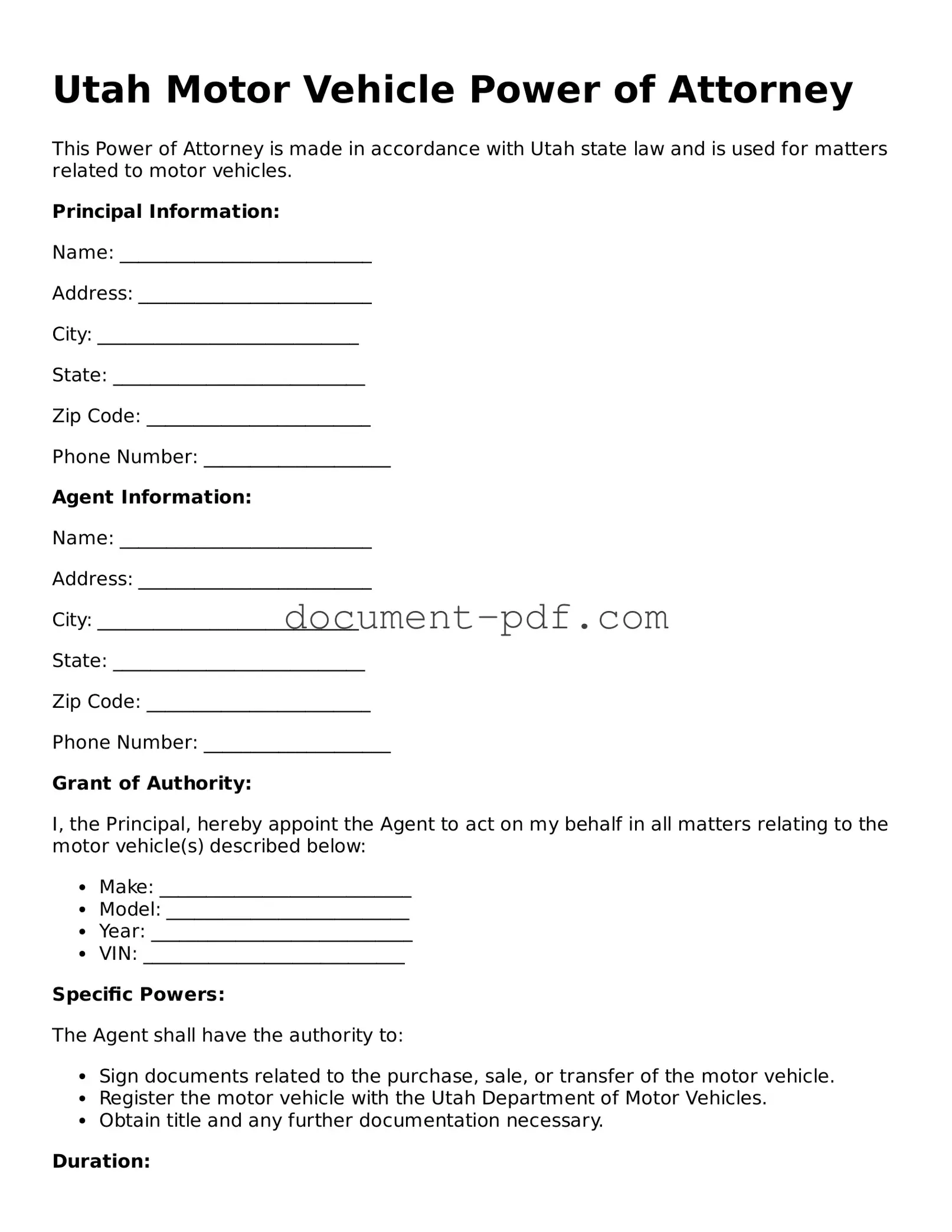Utah Motor Vehicle Power of Attorney
This Power of Attorney is made in accordance with Utah state law and is used for matters related to motor vehicles.
Principal Information:
Name: ___________________________
Address: _________________________
City: ____________________________
State: ___________________________
Zip Code: ________________________
Phone Number: ____________________
Agent Information:
Name: ___________________________
Address: _________________________
City: ____________________________
State: ___________________________
Zip Code: ________________________
Phone Number: ____________________
Grant of Authority:
I, the Principal, hereby appoint the Agent to act on my behalf in all matters relating to the motor vehicle(s) described below:
- Make: ___________________________
- Model: __________________________
- Year: ____________________________
- VIN: ____________________________
Specific Powers:
The Agent shall have the authority to:
- Sign documents related to the purchase, sale, or transfer of the motor vehicle.
- Register the motor vehicle with the Utah Department of Motor Vehicles.
- Obtain title and any further documentation necessary.
Duration:
This Power of Attorney shall remain in effect until revoked by the Principal in writing.
Signature:
_____________________________
Principal’s Signature
Date: ______________________
Witness:
_____________________________
Witness Signature
Date: ______________________
Notary Acknowledgment:
State of Utah, County of _______________
Subscribed and sworn before me on this ___ day of __________, 20__.
_____________________________
Notary Public Signature
My Commission Expires: _____________
